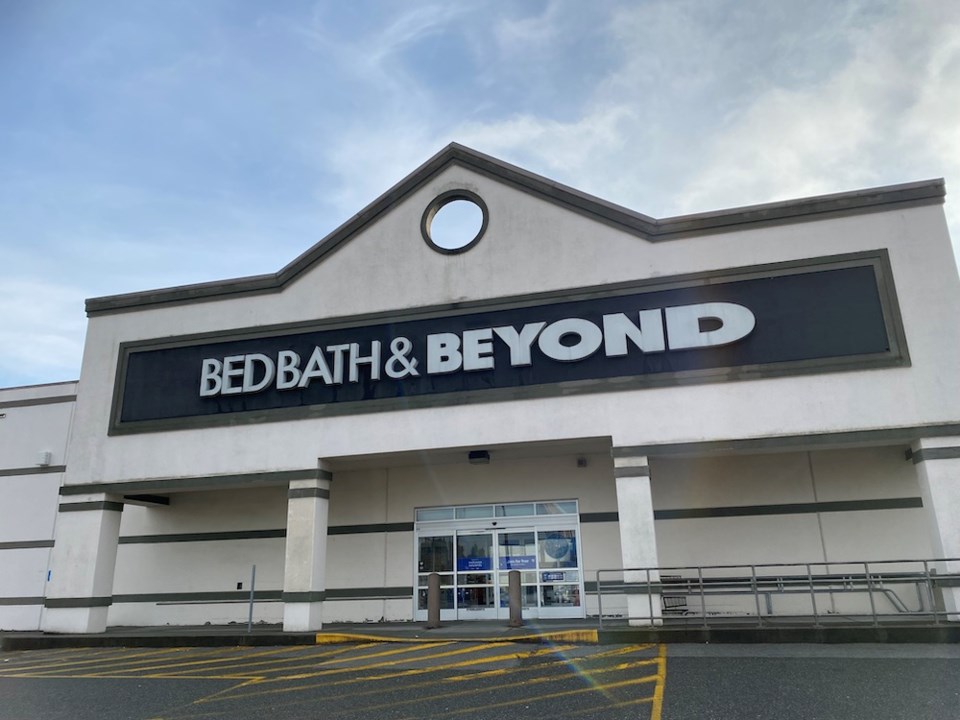The landlords of 65 stores operated by Bed Bath & Beyond Canada Ltd. received formal notification last week of lease terminations, and now the hunt is on for tenants to fill what some have estimated to be the return of nearly 2 million square feet of space nationwide.
The tsunami of retail space hits as the market emerges from pandemic-related closures and consumers feel the bite of inflationary pressures. While retail spending has been strong, discounters have an advantage in the market as consumer seek bargains.
“This is really the first clear shot we’ve had after 2020 for retailers to really consider the market again, and where there’s really been opportunity,” Neil McAllister, senior vice-president, retail, with Lee & Associates in Vancouver, said.
While its U.S. parent managed to stave off bankruptcy, Bed Bath & Beyond sought protection under the Companies Creditors Arrangement Act in Ontario Superior Court on February 10 to secure “breathing room to develop and conduct a controlled and orderly wind down of operations in Canada for the benefit of all stakeholders.”
Court filings attribute its demise in part to the effects of the COVID-19 pandemic, which interrupted efforts initiated in 2018 to restructure its operations.
The company operates 54 Bed Bath & Beyond locations and a further 11 Buybuy Baby locations in Canada. The typical location is 30,000 square feet.
Approximately 32 of the stores are in Western Canada, including 11 in B.C. and 17 in Alberta, with the majority located in Calgary (six) and Edmonton (five).
McAllister said while there’s strong pent-up demand for retail space at the moment, a number of factors will influence who ultimately takes over the premises from price to market positioning.
“It’ll be interesting – they’re not inexpensive places, and some of them don’t demise,” he said. “Lots of people are knocking on doors, but who the eventual candidates will be will be diverse. I don’t think it’s one group that would take them all over.”
McAllister worked with The Bay to find tenants for its eight former Home Outfitters locations in Alberta and B.C. when it shuttered the brand in 2018. While all locations – each about 36,000 square feet – were eventually backfilled by brands like HomeSense, Winners, T&T Supermarket, The Furniture Guys and Source for Sports, but these brands may not need more space in certain market.
It just depends on whether or not the notable people that would typically backfill these things are already in the market or not,” he said. “Some might want to pivot and try to improve their location, but it would depend on lease expiry.”
Colliers was unable to comment on how Bed Bath & Beyond’s vacancies would play out, but its most recent retail report notes that vacancies in suburban markets have reached a historic low of about 1 per cent. While downtown vacancies are about 4 per cent, large-format locations closer to the core are rare.
“If you’re looking for a large block of space downtown, like 25,000 square feet-plus, it really doesn’t exist or it’s very difficult to find,” said Sherman Scott, an associate vice-president with Colliers said following the release of the brokerage’s retail market report at the end of January. “We’re challenged for space, so any new space that can be added to the market will, I think, be helpful.”
A case in point is the space formerly occupied by home furnishings store Pier 1 in the 1700-block of West Broadway. It was filled by La Win Supermarket, a Chinese grocer. Bed Bath & Beyond’s departure from the second floor of the same development will free up a further 30,000 square feet, which could be broken out into two spaces of approximately 5,000 and 25,000 square feet.
This fits the sweet spot some large-format retailers seeking exposure to the Â鶹´«Ã½Ó³»urban market could find appealing.
“There’s lots of pent-up demand because there’s not a lot of opportunity out there,” McAllister said. “There’s a shortage of large format space on the market. They’re just not building it anymore.”



